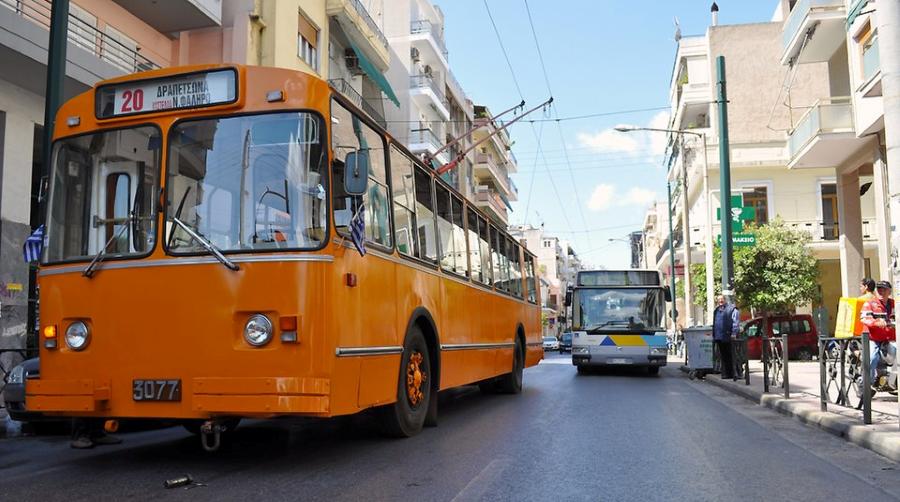
For decades, trolleybuses have been an integral part of daily life in Athens and Piraeus, providing fully electric transportation and reaching even the most remote corners of the metropolitan area. However, in recent years, the system has begun to show its age. Now, the Ministry of Infrastructure and Transport is preparing to decommission the trolleybus network entirely.
This move involves not only withdrawing the vehicles themselves but also dismantling the overhead electric cables that power them. This is part of a broader strategy to modernize Greece’s public transportation system—one that no longer envisions a role for trolleybuses in its future.
Why the decision was made
One of the key reasons behind this decision is the aging condition of the fleet. More than 120 trolleybuses are over 20 years old, with some—such as models by Neoplan and Van Hool—in operation since 1999. As a result, maintaining the fleet has become increasingly difficult and costly.
Replacement parts are both difficult to find and expensive, creating long repair delays and compounding reliability issues. Beyond maintenance, the operational cost per kilometer has also become unsustainable. Trolleybuses now cost an estimated €4.06 (about $4.73) per kilometer, making them the most expensive form of public transportation in Greece.
Compounding the issue is the limited productivity of the fleet. Due to age and mechanical inefficiencies, the actual kilometers traveled annually are 75 percent lower than the expected output based on fleet size and capacity. This decline in performance has led to frequent delays and longer waiting times, particularly during afternoon rush hours, when schedule deviations reportedly reach up to 75 percent. Passenger dissatisfaction has been growing steadily as reliability worsens.

Looking Ahead
With the withdrawal of trolleybuses, Greek authorities aim to redirect resources toward more efficient, flexible, and environmentally sustainable transport solutions. The modernization plan includes battery-electric and hybrid buses, which do not rely on fixed infrastructure like overhead cables and offer greater route adaptability.
Trolleybuses to Be Retired from Streets After Over 70 Years
After more than seven decades of continuous operation, trolleybuses are set to be gradually withdrawn from the streets of Athens, marking the end of an era for one of Greece’s most iconic and environmentally friendly modes of public transport.
Introduced in 1949, the first trolleybuses were intended to modernize Athens’ aging tram system and meet the growing transportation needs of the post-war capital. Operated initially by Hellenic Electric Railways (EIS), the system expanded rapidly in the following decades, providing a clean, electric-powered alternative to diesel buses.
In 1970, the system was placed under the management of ILPAP (Hellenic Electric Urban Transport Organization), which oversaw the fleet and infrastructure. By the 1980s and 1990s, the yellow trolleybuses had become a familiar sight across Athens and Piraeus, serving millions of passengers annually.
In 2011, ILPAP merged with the Athens bus company (ETHEL) to form OSY S.A., under the umbrella of the Athens Urban Transport Organization (OASA). The new entity introduced dual-mode trolleybuses, which could operate both on and off the overhead wire system, improving route flexibility and coverage.
Despite ongoing upgrades, the trolleybus system has faced increasing operational challenges, including aging infrastructure, high maintenance costs, and limited network flexibility. As part of a broader effort to modernize Athens’ public transport fleet and shift toward electric and hybrid buses, authorities have announced plans to retire the trolleybuses over the next few years.
The withdrawal will mark the end of a significant chapter in Greek urban transport history. For many Athenians, the trolleybuses were more than just a way to get around—they were a symbol of the city’s transition into the modern age.


